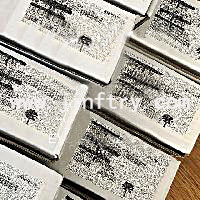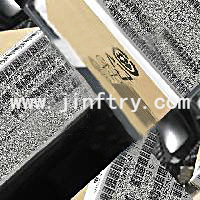Detailed analysis of the principles and applications of common electronic components (resistors, capacitors, inductors, diodes, transistors)
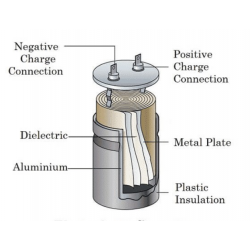
Detailed analysis of the principles and applications of common electronic components (resistors, capacitors, inductors, diodes, transistors)
Electronic components are the basis of modern electronic technology and they play an important role in various fields. From transistors to capacitors and resistors, these common components undertake key tasks such as amplification, switching, and filtering. Their characteristics and the way they are combined determine the performance and functionality of the circuit. This article will introduce the working principles and application scenarios of commonly used electronic components to help readers better understand and use them.

Article directory
resistance
1. What is a resistor?
2. How resistors work
3. Classification of resistors
3.1 Fixed resistor
3.2 Variable resistor
4. Application of resistors
capacitance
1. Principle and structure of capacitor
2. Common applications of capacitors
2.1 Storing charge
2.2 Filtering
2.3 Coupling
2.4 Timing control
2.5 Power supply voltage stabilization
2.6 Sensor
inductance
1. Store energy
2. Filter and suppress noise
3. Coupling and Transformation
4. Timing control
5. Sensor
diode
1. Rectification
2. Protection
3. Switch
4. Detection
5. glow
Which area of the diode volt-ampere characteristic curve does the application work in?
triode
1 Introduction
2. Structure
3. Working principle
3.1 Basic principles
3.2 Amplification
3.3 Switch function
4. Parameters
4.1 Maximum collector current (IC max)
4.2 Maximum collector-base voltage (VCE max)
4.3 Maximum power consumption (P max)
4.4 Gain (β)
5. Application scenarios
amplifier
switch
Oscillator
Stabilizer
resistance
1. What is a resistor?
A resistor is a component used to limit current, divide voltage, match resistance, etc. It is made from a length of resistive material, usually a carbon film, metal film or wire, wrapped in a shell of insulating material. The resistance value of a resistor is expressed in ohms (Ω).
2. How resistors work
The working principle of a resistor is based on Ohm's law, that is, the relationship between current and voltage is I = V / R I = V / RI = V / R, where I II is the current, V VV is the voltage, and R RR is the resistance value. When a voltage is applied across a resistor, the resistor will cause current to flow through it, creating heat at the same time. This is because the resistive material of the resistor has a certain resistivity, which causes energy loss when current passes through it.
3. Classification of resistors
According to different resistance values, resistors can be divided into fixed resistors and variable resistors.
3.1 Fixed resistor
The resistance value of a fixed resistor is fixed and cannot be adjusted. Depending on the resistance value, fixed resistors can be divided into the following types:
**Carbon Film Resistor Z: Made of carbon film material, it has smaller size and lower cost and is suitable for general circuit applications.
Metal film resistors: Made of metal film materials, they have high accuracy and stability and are suitable for precision instruments and measuring equipment.
Metal oxide film resistor (MOX resistor): Made of metal oxide film material, it has high power endurance and temperature stability, and is suitable for high-power circuits and high-temperature environments.
3.2 Variable resistor
The resistance value of a variable resistor can be adjusted with a knob, slide, or other means. Depending on the adjustment method, variable resistors can be divided into the following types:
Variable resistor (knob resistor): The resistance value is adjusted through a knob, often used for volume adjustment, brightness adjustment and other applications.
Variable resistor (sliding resistor): The resistance value is adjusted by sliding, often used in applications such as lighting adjustment and motor speed control.
Programmable resistor: The resistance value is adjusted through digital signals or programming, often used in automation control and digital circuits.
4. Application of resistors
Current-limiting circuit: Resistors can be used to limit the amount of current in a circuit and protect other components. For example, in an LED circuit, in order to protect the LED from damage by excessive current, an appropriate resistor can be connected in series to limit the current.

Voltage divider circuit: Resistors can be used to divide voltage and convert high voltage to low voltage to adapt to the operating range of other components. For example, when a voltmeter measures high voltage, an appropriate resistor can be connected in series to divide the voltage to within the working range of the meter.
Voltage regulation: Variable resistors can be used to regulate the voltage in a circuit to achieve precise control of the circuit. For example, in a volume adjuster, a variable resistor can be used to adjust the volume.
Signal matching: Resistors can be used to match signal impedance in a circuit to improve the quality of signal transmission. For example, in audio amplifiers, resistors can be used to match the impedances of the input and output to improve the transmission of audio signals.
Current detection: Detect the current in the circuit through the voltage drop of the resistor to achieve current monitoring and protection. For example, in a battery charger, a resistor can be used to detect the charging current of the battery to control the size of the charging current.
Temperature sensor: The resistance value of a resistor changes with temperature, and this characteristic can be used to make a temperature sensor. For example, thermistors (PTC and NTC) can change the resistance value according to changes in temperature, thereby achieving temperature measurement and control.
capacitance
Capacitor is one of the common components in electronic circuits and has functions such as charge storage, filtering, coupling, and timing control. It is widely used in various electronic devices.
1. Principle and structure of capacitor

The principle of a capacitor is based on the presence of an electric field and the storage of electric charge. When there is a potential difference between two conductors, an electric field is formed between them. A capacitor consists of two conductors, called electrodes, and an insulating medium between them, called the dielectric.
Common dielectric materials include alumina, ceramics, polyethylene, etc. The choice of dielectric depends on the application requirements such as operating voltage, operating temperature, frequency response, etc.
The capacitance value of a capacitor (in farads) represents the capacitor's ability to store electrical charge. The larger the capacitance value, the more charge the capacitor stores. The capacitance value can be adjusted by the capacitor geometry, dielectric material, and electrode material.
2. Common applications of capacitors
2.1 Storing charge
One of the most basic functions of a capacitor is to store electrical charge. When a capacitor charges, charge accumulates between the electrodes. This ability to store electrical charge makes capacitors widely used in many electronic devices.
For example, a capacitor in an electronic flashlight stores an electric charge and releases it when needed, producing an intense flash of light. Similarly, capacitors in electronic clocks store electrical charge to keep time accurate.
2.2 Filtering
Capacitors can be used as filters to filter out high-frequency noise in the circuit and make the signal purer. In many electronic devices, filtering is very important to ensure the quality of the signal.
For example, in audio amplifiers, capacitors can be used to filter out high-frequency noise in the input signal and improve the quality of the audio signal. The capacitance value and frequency response characteristics of the capacitor can be selected based on specific application requirements.
2.3 Coupling
Capacitors can be used to couple signals and transfer signals from one circuit to another circuit. This is very common in amplifier circuits.
For example, in an amplifier circuit, a capacitor can be used to couple the input signal to the input terminal of the amplifier to achieve signal transmission and amplification. The capacitance value and frequency response characteristics of the capacitor play an important role in signal transmission and amplification.
2.4 Timing control
Capacitors can be used to implement timing controls such as delay and pulse generation. Through the charging and discharging process, the charging and discharging time of the capacitor can be controlled, thereby achieving timing control of the circuit.
For example, a delay circuit can be implemented by controlling the charging time of the capacitor. Similarly, through the charging and discharging process, pulse signals can be generated that are used to trigger the work of other electronic components.
2.5 Power supply voltage stabilization
Capacitors can be used to stabilize the power supply voltage and reduce power supply ripple. In power supply filter circuits, capacitors can be used to smooth the power supply voltage and provide stable power output.
The capacitance value and voltage rating of the capacitor need to be selected based on the requirements of the power supply. Larger capacitor values provide better power supply regulation.
2.6 Sensor
The capacitance value of the capacitor changes with the surrounding environment, and this characteristic can be used to make sensors. For example, a humidity sensor can use the capacitance value of a capacitor to change with changes in humidity to achieve humidity measurement and control.
Such sensors based on capacitance changes are widely used in many applications, such as temperature sensors, humidity sensors, pressure sensors, etc.
inductance
An inductor is a component that stores electrical energy and is composed of a coil of conductor. When an electric current passes through a coil of conductor, it creates a magnetic field that stores electrical energy. The basic unit of inductance is Henry (H).

1. Store energy
Inductors store electrical energy and release it when current changes. When current passes through an inductor, the magnetic field stores electrical energy. When the current changes, the magnetic field also changes, causing the inductor to release the stored electrical energy.
This ability to store and release energy makes inductors widely used in many electronic devices. For example, inductors in transformers can store and transmit electrical energy for power transmission and conversion.
2. Filter and suppress noise
Inductors can be used as filters to filter out noise in a circuit by blocking or passing signals of specific frequencies. Inductors have high impedance to high-frequency signals and can block the transmission of high-frequency noise.
Therefore, inductors are often used in electronic equipment to filter out high-frequency noise and improve signal quality. For example, in radios, inductors can be used to filter out high-frequency noise on power lines to ensure the clarity of the audio signal.
3. Coupling and Transformation
Inductors can be used to achieve coupling and voltage transformation between circuits. When two inductors are brought into close proximity, their magnetic fields couple to each other, transferring energy and signals.
This coupling characteristic makes inductors widely used in transformers. Transformers can increase and decrease voltage through mutual coupling between inductors.
4. Timing control
Inductors can be used to implement timing controls such as delays and oscillation. By changing the inductor's inductance value and current change rate, the response time and frequency of the inductor can be controlled.
For example, in an oscillation circuit, an inductor can be used in combination with a capacitor and a resistor to produce a stable oscillation signal. This timing control feature is widely used in many electronic devices such as clocks, timers, and generators.
5. Sensor
The inductance value of the inductor can change with changes in the surrounding environment, and this characteristic can be used to make sensors. For example, a temperature sensor can use the inductance value of an inductor to change with temperature to achieve temperature measurement and control.
Such sensors based on changes in inductance are widely used in many applications, such as temperature sensors, humidity sensors, pressure sensors, etc.
diode
A diode is an electronic device with two electrodes, an anode and a cathode. It is a nonlinear component with many important functions and applications.
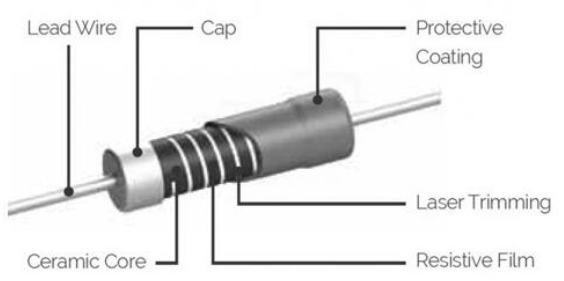
1. Rectification
Diodes can be used as rectifiers to convert AC signals into DC signals. When an AC signal passes through a diode, it can only pass in one direction and is blocked in the other. This property allows the diode to remove the negative half-cycle of the AC signal, thereby obtaining a pure DC signal.
Rectifiers are widely used in fields such as power supplies, motor control, and communication equipment.
2. Protection
Diodes can be used as circuit protection devices to prevent overvoltage and reverse voltage from damaging circuits and components. When overvoltage or reverse voltage occurs in the circuit, the diode can guide the overvoltage or reverse voltage to ground, thus protecting other components from damage.
Protection diodes are commonly used in power circuits, communication lines and electronic equipment to protect them from voltage fluctuations and electromagnetic interference.
3. Switch
Diodes can be used as switches to control the on and off circuits. When a diode is forward biased, it is conducting and current can pass through it. And when the diode is reverse biased, it is in a cut-off state and current cannot pass.
This switching function makes diodes widely used in applications such as digital circuits, computer logic gates, and memories.
4. Detection
Diodes can be used as detectors to convert high frequency signals into low frequency signals. When a high-frequency signal passes through a diode, it can only pass in one direction and is blocked in the other. This property allows the diode to remove the oscillation part of the high-frequency signal, thereby obtaining a low-frequency signal.
Detectors are widely used in communications, broadcasting and audio equipment to demodulate and extract signals.
5. glow
Certain special types of diodes, such as light-emitting diodes (LEDs), can convert electrical energy into light energy. When electric current passes through an LED, it emits visible light, which is used in applications such as indication, lighting, and display.
LEDs are widely used in electronic products, lighting equipment, and display screens, and are favored due to their high efficiency, long life, and dimmable performance.
Rectification: When the diode is forward biased, it works in the forward conduction region, that is, the working state of the diode when it is forward conduction.
Protection: When the diode is reverse biased, it works in the reverse breakdown region, that is, the working state of the diode when it reverses breakdown.
Switch: When the diode is forward biased, it works in the forward conduction region, that is, the working state of the diode when it is forward conduction. When reverse biased, it works in the cut-off region, that is, the working state of the diode when it is reverse cut-off.
Detection: When the diode is forward biased, it works in the forward conduction area, that is, the working state of the diode when it is forward conduction. After the oscillation part of the high-frequency signal is removed, the voltage value becomes a low-frequency signal, and the working state of the diode becomes reverse cut-off.
Luminescence: When the light-emitting diode is forward biased, it works in the forward conduction region, that is, the working state of the diode when it is forward conduction. It emits light by converting electrical energy into light energy.
triode
1 Introduction
Transistor is an important electronic device commonly used in amplification and switching circuits. It consists of three electrodes that are different from the diode, namely the emitter (Emitter), the base (Base) and the collector (Collector). The working principle and application of triodes are very wide, and they are essential for understanding and designing electronic circuits.
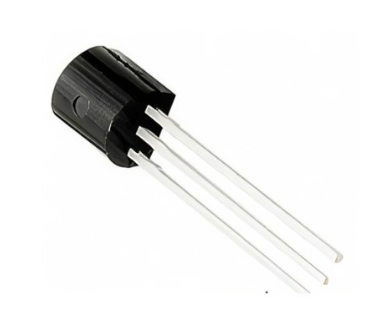
2. Structure
A transistor usually consists of two PN junctions, namely the emitter junction and the collector junction. The emitter junction is a combination of N-type material and P-type material, while the collector junction is a combination of P-type material and N-type material. The base is located between the emitter junction and the collector junction. It is a small, undoped region.
The structure of the triode determines its working principle and performance.
3. Working principle
3.1 Basic principles
A triode is a semiconductor device composed of three differently doped semiconductor materials. Its structure includes emitter, base and collector. The working principle of the triode is based on the electron transport and control of the PN junction.
When a forward bias voltage is applied between the emitter junction and the base of the triode, the emitter junction is in a forward biased state and the base is in a reverse biased state. At this time, the majority carriers (holes) in the P region of the emitter junction recombine with the majority carriers (electrons) in the N region, forming a current flowing from the emitter to the base. This current is called the emitter current (IE).
When a forward bias voltage is applied between the collector junction and the base of the transistor, the collector junction is in a forward biased state and the base is in a reverse biased state. At this time, the majority carriers (electrons) in the N region of the collector junction recombine with the majority carriers (holes) in the P region, forming a current flowing from the collector to the base. This current is called collector current (IC).
Base current (IB) is the current that flows into or out of the base. It controls the proportional relationship between emitter current and collector current. When the base current increases, the emitter current and collector current also increase accordingly.
3.2 Amplification
One of the main functions of a triode is to amplify signals. When an input signal is applied to the base, it controls the current flow between the emitter and collector junctions. Small input signals can be amplified into larger output signals by transistors.
This amplification effect makes triodes widely used in amplifiers, audio equipment, and communication systems.
3.3 Switch function
Transistors can also be used as switches to control the on and off of circuits. When the transistor is in saturation, it is in a conducting state and current can pass through. And when the transistor is in the cut-off state, it is in the disconnected state and the current cannot pass.
This switching function makes transistors widely used in applications such as digital circuits, computer logic gates, and memories.
4. Parameters
4.1 Maximum collector current (IC max)
The maximum collector current is the maximum current that the triode can withstand. Above this current, the transistor may overheat and be damaged.
4.2 Maximum collector-base voltage (VCE max)
The maximum collector-base voltage is the maximum voltage the triode can withstand. Above this voltage, the transistor may breakdown and be damaged.
4.3 Maximum power consumption (P max)
The maximum power dissipation is the maximum power that the triode can withstand. Above this power, the transistor may overheat and be damaged.
4.4 Gain (β)
Gain is the amplification factor of the triode and represents the proportional relationship between the output signal and the input signal. The greater the gain, the better the amplification effect.
5. Application scenarios
amplifier
Transistors can be used as amplifiers to amplify small signals into larger signals. By controlling the base current, the amplitude of the output signal can be adjusted. Amplifiers are widely used in audio equipment, communication systems, amplification circuits and other fields.
switch
Transistors can be used as switches to control the on and off of circuits. When the base current is zero, the transistor is in a cut-off state and the circuit is disconnected; when the base current is non-zero, the transistor is in a saturated state and the circuit is on. Switching circuits are widely used in digital circuits, computer logic gates, memories and other fields.
Oscillator
Transistors can be used in oscillator circuits to produce a continuous oscillating signal. By controlling the base current and the charging and discharging process of the capacitor, the oscillation frequency can be adjusted. Oscillators are widely used in fields such as radio, communications and timing equipment.
Stabilizer
Transistors can be used in voltage regulator circuits to stabilize voltage output. By controlling the proportional relationship between the base current and the collector current, stable regulation of the voltage can be achieved. Voltage stabilizers are widely used in power supplies, electronic equipment, instruments and other fields.
edit author:

Jinftry(Hong Kong registered company name: JING FU CAI (HONGKONG) INTERNATIONAL CO., LIMITED) is an electronic parts distributor selling latest electronic components including integrated circuits, IC electronics, IC integrated circuits, IGBT, IGBT modules, button battery LR44,discrete te semiconductors, circuit protection, capacitors, resistors, potentiometers, transformers, isolators, crystals , oscillators, resonators, power managers, connectors, switches, relays, sensors, optoelectronic devices, diodes, and various batteries. Welcome to purchase electronic components from brand manufacturers. To view the solutions, you can log in to https://www.jinftry.com/ for inquiries


